With their pincers, horns and armour, these minibeasts might look terrifying, but luckily for us they are tiny and harmless. You can see them all around us, living in leaf litter, plants, water, sand and soil, but you'll need to get close-up to spot them.
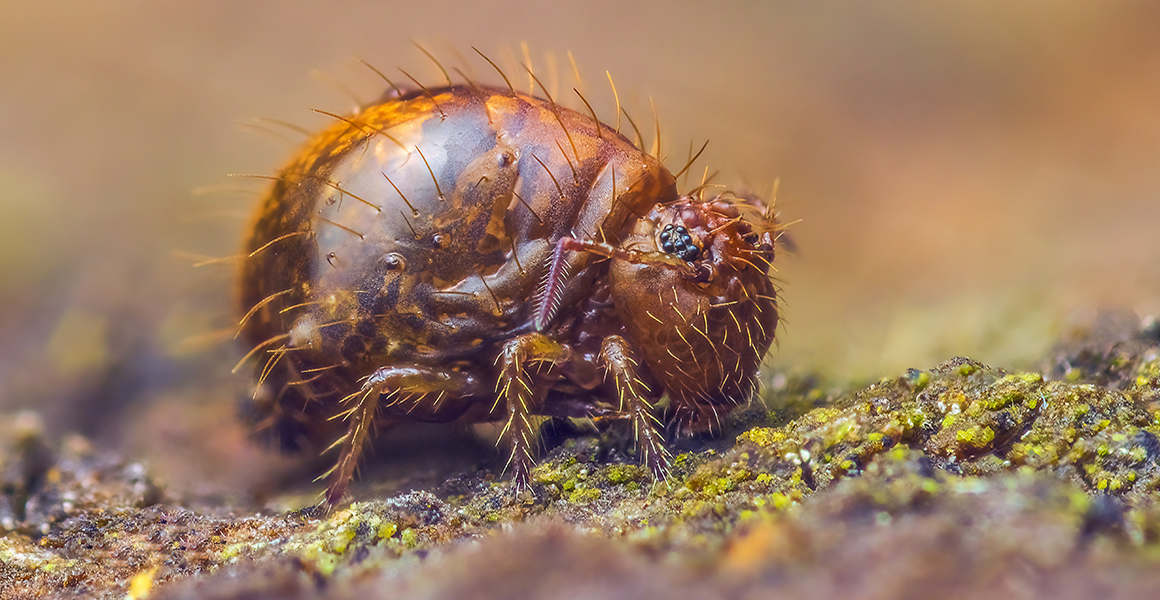
A small hairy springtail lumbers across the ground. © Lukas Jonaitis/Shutterstock
What is a minibeast?
A minibeast is any small creature such as an insect, caterpillar or snail. Go on a minibeast hunt and see how many strange and unusual minibeasts you can find.
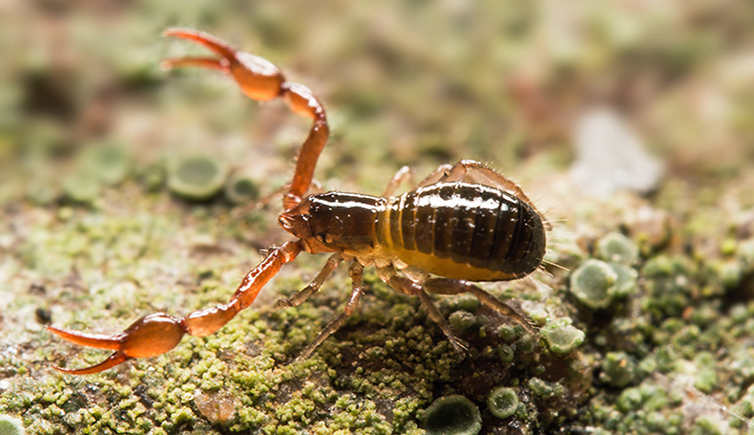
A pseudoscorpion and its fine pincers. © Rainer Fuhrmann/ Shutterstock
The pincers of the pseudoscorpion look terrifying, but are mercifully tiny and harmless to humans. At only two to eight millimetres in size, this minibeast is only slightly bigger than a sesame seed.
Pseudoscorpions are only inspired to kill and eat the larvae of tiny creatures such as carpet beetles, ants, mites and flies. They catch their prey by injecting venom into their small victims through their pincers.
These minibeasts are arachnids and so are related to spiders and scorpions. Their name means 'fake scorpion' because even though they have pincers, they don't have a stinger.
Pseudoscorpions live in leaf litter, sand dunes and even in your house – anywhere they might find food. Piles of composts are in fact one of their favourite places to live.
There are 27 species of pseudoscorpion living in the UK and they can actually be helpful creatures to have around, as they eat insect pests.
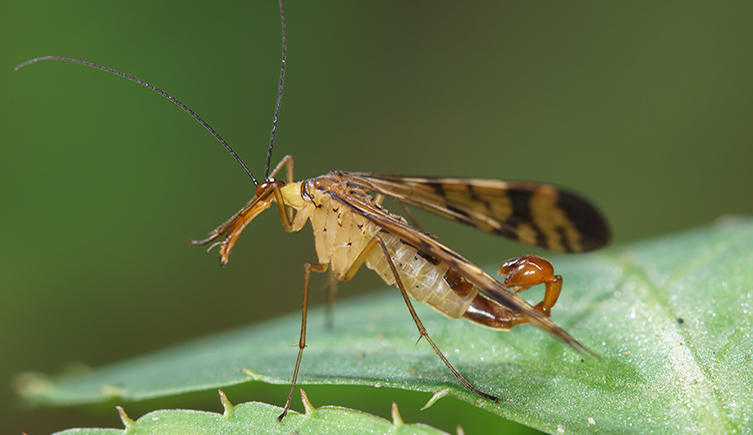
A male scorpion fly. © Suede Chen/ Shutterstock
This minibeast might look like part fly, part scorpion, but it's actually neither. In fact, scorpion flies are more closely related to fleas than flies and belong to an order of insects called Mecoptera.
The tail of a scorpion fly isn't a stinger, it's the male scorpion fly's genitals!
Scorpion flies live in green spaces such as parks and eat dead insects, which they creepily steal from spider webs.
These ancient insects have been around since the time of the dinosaurs and their strange habits don't stop at eating dead things from spider webs. The male scorpion fly gives the female a drop of saliva as a mating gift that she eats while mating. Presenting a gift increases the chances of a male attracting a mate.
You might be able to spot scorpion flies across the UK as they go about their curious business. They have black markings on their wings and have a wingspan of around thirty-five millimetres.
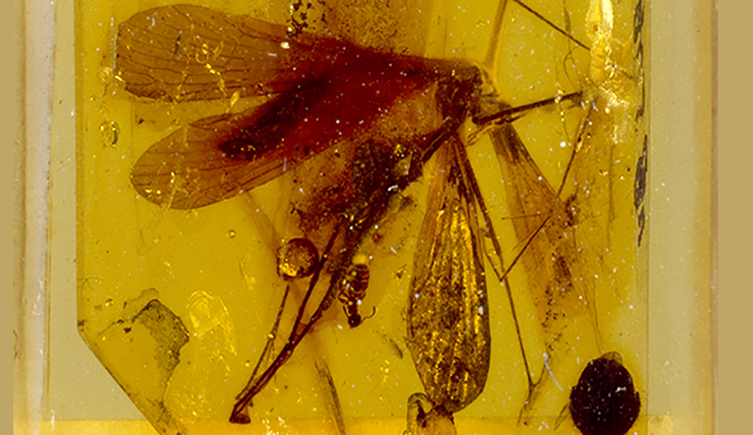
This scorpion fly lived around forty million years ago. It died trapped in amber, which preserved it for us to study today.
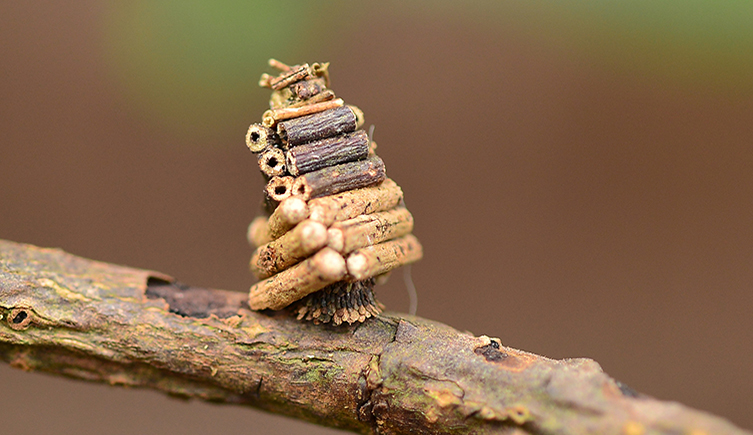
This bagworm larva lives inside its homemade shelter. © TRR/ Shutterstock
Bagworms are mysterious beasts. Not wanting to be seen by the world, the larva of the bagworm moth builds a structure around itself. It binds this structure together with silk and uses it to hide from birds and other predators.
Tucked away in its case, the bagworm larva eats and grows until it's time to change into an adult. When it's ready, a male larva will pupate into a small, furry moth, while a female larva will change into another worm-like form.
The adult female bagworm can lay eggs with or without being fertilised by a male.
Different species of bagworm prefer different materials when it comes to making their small, movable shelters. Some use sticks, leaves and lichen whereas others use old spider and centipede skins.
You might see bagworms attached to fence posts or walls. Harmless to humans, bagworms feed on plants, including lichens and grasses.
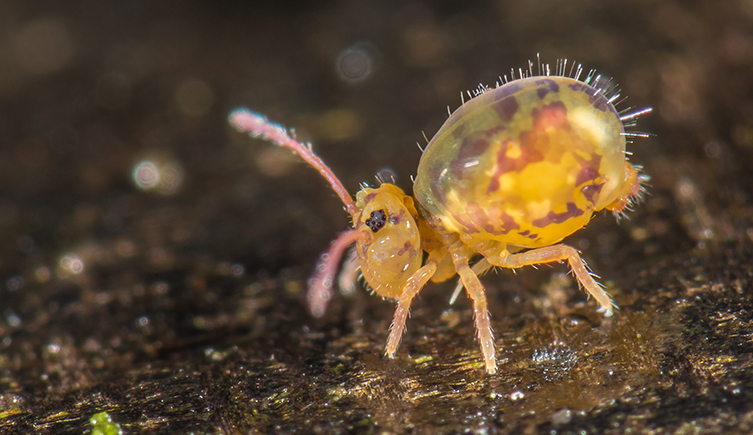
A springtail exploring its world. © Mirko Graul/ Shutterstock
With their little hairy bodies and big antennae, these cute minibeasts lumber around in leaf litter, soil or compost piles. But at one to six millimetres in size, they can be difficult to spot.
They are named springtails because if they feel threatened, they can spring into the air using an appendage that sits underneath them that is a little like a curled-up tail. When it's released, they launch up to ten centimetres into the air, which is remarkable, because this is many times their tiny size.
Even though they have six legs arranged in three pairs, these common and cute minibeasts are not insects. They belong to a different group of arthopods called Hexapoda, which literally means six legs.
There are many springtails living in the soil so you might be able to spot some if you look closely.
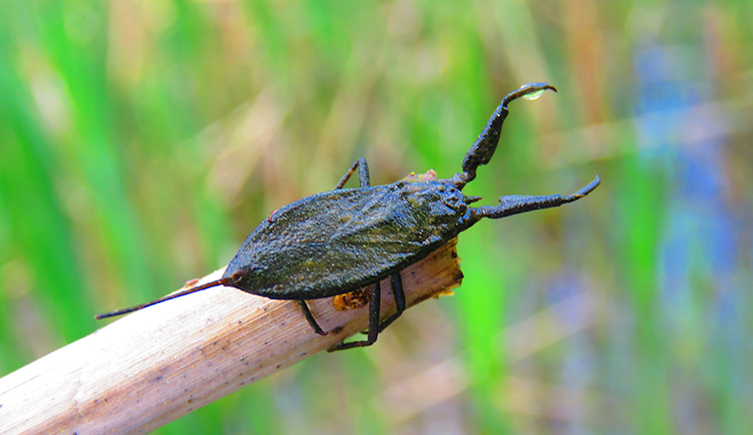
This water scorpion looks like it might be ready for a battle. © Przemyslaw Muszynski/ Shutterstock
A water scorpion might look like it's wearing armour, but it's not going into battle. Instead, this minibeast lives in water and catches its prey by hiding under leaves at the bottom of a pond or stream. As its prey swims past, the water scorpion grabs it with its forelegs.
Water scorpions catch and eat tadpoles, mosquito larvae and even small fish.
What looks like a stinger is actually a tube that it uses to breath with. It pokes this tube up through the surface of the water just like a snorkel, allowing it to breathe through its bottom while it creeps through pond plants looking for prey.
You can find water scorpions living in a pond in your local park or in small streams or canals.
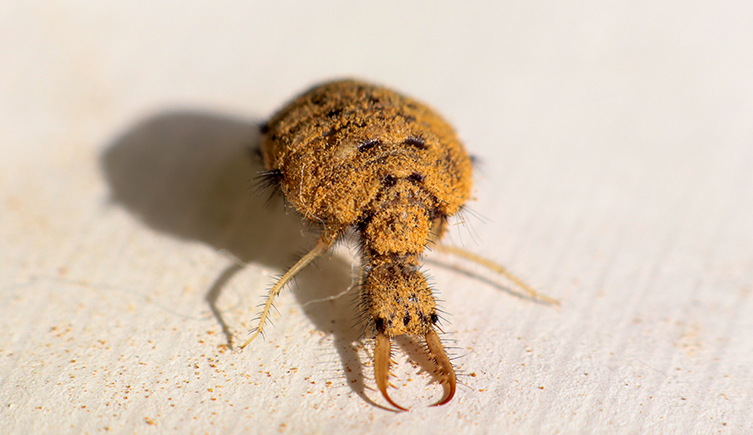
An antlion larvae waits for its prey. © Upen supendi/ Shutterstock
If you were as small as an ant, an antlion would be terrifying. Antlion larvae lie in the sand ready to ambush passing ants, which they grab with their sharp pincers and eat alive.
The antlion larvae are about one centimetre long. They make a tiny pit in the sand for ants to fall into – you can easily spot these on a beach, if there are antlions living there. When an ant falls in, the antlion throws in extra sand to smother it and then goes into the pit to catch it.
The antlion can stay in its larval form for as long as two years. After which it pupates under the sand, or soil, into a winged adult that looks a little like a dragonfly and that only lives for a couple of weeks.
There is only one species of antlion living in the UK, Euroleon nostras, and it is only found at Holkham National Nature Reserve in Norfolk and Sandlings in Suffolk, so you might have trouble spotting this one unless you visit those beaches.
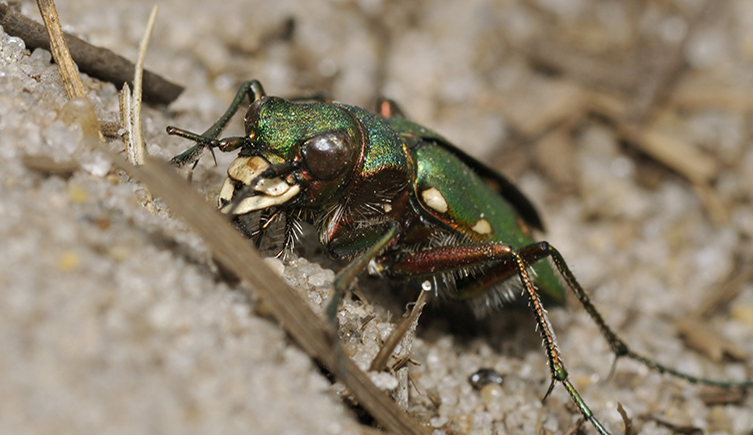
A green tiger beetle searches for food. © Martin Fowler/ Shutterstock
Iridescent and spotted with furry legs, the green tiger beetle is around one and a half centimetres in size – that's only slightly bigger than your fingernail. This beetle lives in places where few plants grow. Look for them scurrying quickly across sandy habitats like heaths, sandy dunes or even urban spaces like car parks.
This beetle is a hunter. It eats spiders, caterpillars or anything it can hunt down to devour. Like antlions, the larvae of the green tiger beetle also make pitfall traps – small pits that other minibeasts fall in, get trapped and are then eaten.
The green tiger beetle, Cicindela campestris, is found all over the UK, but it isn't very common, so you'll be lucky if you see one. You are more likely to see them in summer, as the adults come out from April to September.

British wildlife
Find out about the plants and animals that make the UK home.
Don't miss a thing
Receive email updates about our news, science, exhibitions, events, products, services and fundraising activities. We may occasionally include third-party content from our corporate partners and other museums. We will not share your personal details with these third parties. You must be over the age of 13. Privacy notice.
Follow us on social media